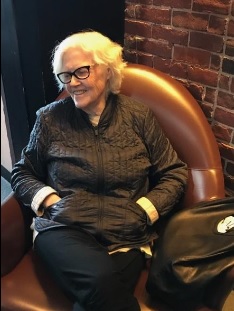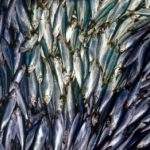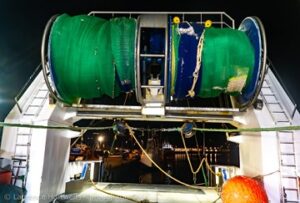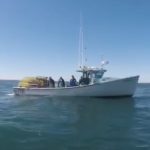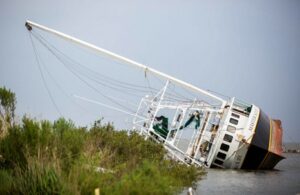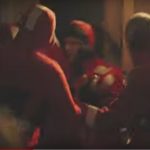Tag Archives: Dr. Kevin Stokesbury
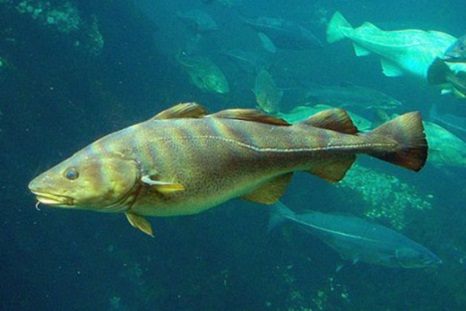
Ocean Industrialization: Fishing regulators fear wind turbines could threaten spawning area for Atlantic cod
It is the largest offshore HAPC designation in the region. Yet a main concern is cod spawning grounds in a smaller region within the designation, just east of Block Island. That area, known as Cox Ledge, overlaps with some 250 square miles currently leased to developers Ørsted and Eversource for their joint wind energy project: South Fork Wind. It is one of only two offshore wind projects that have completed the federal permitting process. “We are really going about the wind farm development very quickly,” said Kevin Stokesbury, a fisheries science professor at UMass Dartmouth, who studies cod in the Gulf of Maine. “It’s going to be quite a dramatic change to the ecosystem out there.” “We’ve all made sacrifices so cod can recover,” said Capt. Tim Rider, who fishes for groundfish and scallops. “Now they’re going to put a wind farm there,” he said of the cod spawning grounds. “How about they put it somewhere that might not be as intrusive.” >click to read< 11:05

After many years, New England cod seems to be rebounding from overfishing
Atlantic cod, a fish that was foundational to New England’s economy, is being caught at historically low levels. But a research scientist says cod is in the early stages of a comeback. Before Raymond Lees goes fishing, he stops by Reidar’s Trawl Gear in New Bedford, Mass., where he buys custom nets that help him avoid certain types of fish. For commercial fishermen like Lees, cod is known as a choke species, meaning fishermen catch so much of it by accident, they sometimes hit their quota and have to stop fishing for what they really want. But new research from Kevin Stokesbury, a professor of fishery science at the University of Massachusetts Dartmouth, is challenging that claim. Audio report, >click to listen/read< 15:30
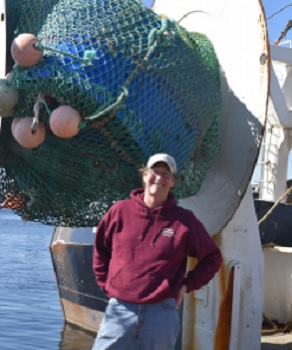
New England’s founding fish, may be returning to local waters
Atlantic cod, once a mainstay of the region’s economy, is being fished at historically low levels, but a research scientist whose past findings opened up a tightly regulated scallop fishery says cod may be staging a comeback. Before he heads out to sea, commercial fisherman Raymond Lees stops by Reidar’s Trawl Gear & Marine Supply in New Bedford to buy custom-designed fishing nets. The shape of the net, the width of its mouth and the size of its holes all help him target certain species of fish and, perhaps more importantly, avoid others. “I’ve spent so long running away from codfish that I’ve gotten better at running away from codfish,” Lees said during a recent run to Reidar’s. “I have specialized gear and I’m good at what I do.” “We went from a huge fishing business, as far as the groundfishing fleet’s concerned, of 300 boats down to 20 boats,” Bendiksen said. “It’s pretty much a 90 percent loss of what the fleet was.” >click to read< 08:10
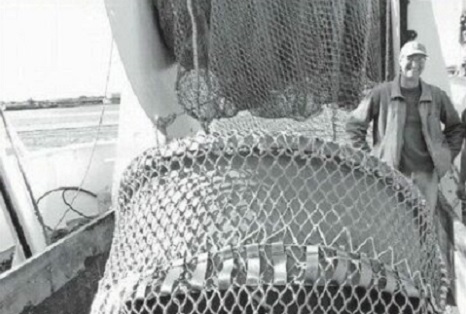
Jim Kendall – Finding Common Ground
With regard to the letter from Sam Novello posted on Fisherynation.com, Finding Common Ground off to a Bad Start, he very eloquently laid out some of the faults, errors, and out and out incompetence of the Northeast Fisheries Science Center with respect to their continued mismanagement of the Northeast fisheries stock assessments. I know from past work and associations with the NEFSC that this has been going on for so long that they likely now believe their own Mantra about their science being the best (and only way) in which to compile the NE groundfish stock assessment. Unfortunately groundfish is not their only problematic stock assessment. >click to read< 16:32
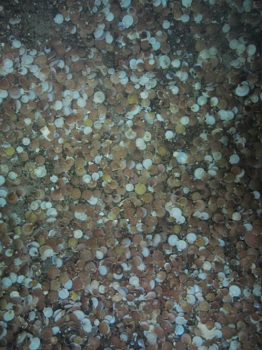
Stokesbury’s image-based, drop camera survey has been pivotal in the revival of the scallop industry
Stock assessment is one of the many key areas of research being conducted by several professors at UMass Dartmouth’s School for Marine Science & Technology (SMAST). Efforts led by Professors Steve Cadrin, Pingguo He, and Kevin Stokesbury help characterize how offshore wind development interacts with the marine environment, including important fisheries and critical habitat. Their findings are also critical in advancing offshore wind in a sustainable manner while minimizing impacts to existing marine activities and resources. >click to read< 13:34
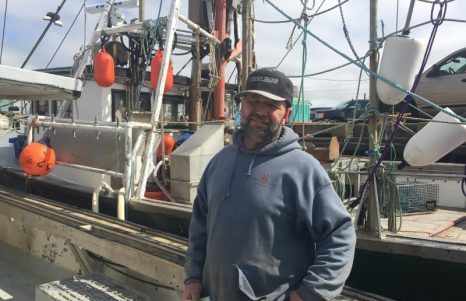
They’re just pouring money into it -“A Big Fugazi”: Why Fishermen Still Can’t Get Behind Offshore Wind
“This is going to affect every fisherman and fishes around these windmills,” Schneider says. “These crabs, these lobsters, seismic activity bothers them I believe and it’s not benefiting any one of us except a foreign company.” Schneider’s not alone. Fisherman along the Rhode Island and Massachusetts coast fear they could lose a significant portion of their catch. This is especially true for squid fishermen because the wind farm area will be constructed near their fishing grounds.,,,Dr. Kevin Stokesbury is a professor of fisheries oceanography at the University of Massachusetts, Dartmouth. He says the wind farms will be installed in a fairly large homogenous environment in the sea floor, which will change the environment. >click to read<13:29
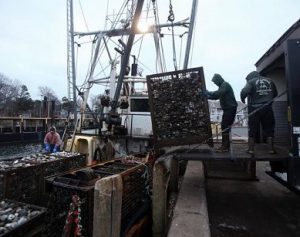
Upcoming vote could be ‘devasting’ for New England clams
While New Bedford gains its notoriety as the scallop capital of the world, Massachusetts is known for its clam chowder. A New England Fisheries Management Council meeting in Newport scheduled for Tuesday could affect the latter. An afternoon agenda item will discuss the possibility of closing an area in Nantucket Shoals, that the clam industry calls vital to its survival… To prevent the action, the surf clam industry has rallied together and sought the legal services of former New Bedford mayor and attorney Scott Lang. The coalition consists of Atlantic Capes, Seawatch International, Nantucket Sound Seafood, and Intershell Seafood International. Together, the group consists of only about 15 vessels harvesting clams in the area southeast of Chatham and east of Nantucket. >click to read<22:05
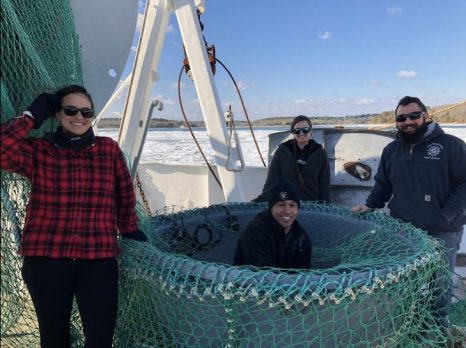
Don Cuddy – SMAST codfish counting innovation looks promising
Last December the New England Fishery Management Council voted to increase the amount of cod available to commercial fishermen in the Gulf of Maine by 39% for the 2018 fishing year. This is welcome news. New England fishermen have endured some lean years since 2013 when the cod quota was slashed by 78 percent after new data incorporated into the 2011 assessment indicated that the stock was lower than previously estimated-obviously a great deal lower. Estimating how many codfish might be out there at any given time is the greatest challenge facing fishery managers and the numbers have been subject of much controversy, with fishermen continually decrying the “best available science” as inadequate. >click to read< 19:25
Many fishermen believe Stokesbury saved the scallop industry
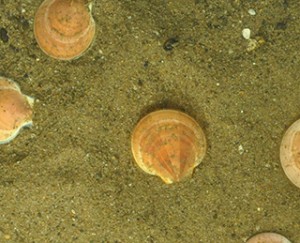 Well, I guess that I had better start writing some of this stuff down, as it seems that my memory is getting fuzzier by the day. Not an uncommon affliction for an old fisherman, who has been put ashore, but who still has enough recall to remember some things that are just too important to allow to fade into obscurity! I had been a scalloper out of New Bedford for 32 years, both as a deckhand, and as a captain of several high-line scalloper vessels. Over all those years there were several trips that stay relatively fresh in my mind’s eye, but one of the most important and fulfilling ones actually occurred after I came ashore. By Jim Kendall click here to read the story 21:55
Well, I guess that I had better start writing some of this stuff down, as it seems that my memory is getting fuzzier by the day. Not an uncommon affliction for an old fisherman, who has been put ashore, but who still has enough recall to remember some things that are just too important to allow to fade into obscurity! I had been a scalloper out of New Bedford for 32 years, both as a deckhand, and as a captain of several high-line scalloper vessels. Over all those years there were several trips that stay relatively fresh in my mind’s eye, but one of the most important and fulfilling ones actually occurred after I came ashore. By Jim Kendall click here to read the story 21:55
This is exciting! SMAST scientists improving cod counting technology
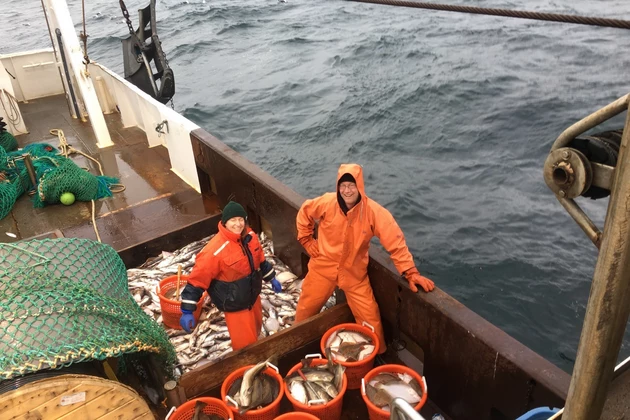 A new video system designed by UMass Dartmouth School for Marine Science and Technology (SMAST) scientists to assess the population of cod has passed its first major test, giving the researchers confidence that they can use this new approach to help improve the accuracy of future scientific assessments of this iconic species. Recent stock assessments indicate that the Gulf of Maine cod population is low and struggling to recover. Members of the fishing industry contest those results, suggesting the stock is much healthier than depicted in recent assessments. Video, Read the rest here 06:03
A new video system designed by UMass Dartmouth School for Marine Science and Technology (SMAST) scientists to assess the population of cod has passed its first major test, giving the researchers confidence that they can use this new approach to help improve the accuracy of future scientific assessments of this iconic species. Recent stock assessments indicate that the Gulf of Maine cod population is low and struggling to recover. Members of the fishing industry contest those results, suggesting the stock is much healthier than depicted in recent assessments. Video, Read the rest here 06:03
Interview – “Counting Fish” – Don Cuddy tells how the film came about
 “Counting Fish” a new documentary by Don Cuddy, profiles the work of Dr. Kevin Stokesbury, researcher at the University of Massachusetts Dartmouth, in his efforts to improve the way scientists assess fish stocks. Stokesbury drags a net with an open end, which fish swim through. As the fish pass out of the net, cameras record them. Scientists can then identify fish by their images. This allows for longer tows – as much two hours at a time – and the fish are not killed by the process. Listen to the interview here 08:47
“Counting Fish” a new documentary by Don Cuddy, profiles the work of Dr. Kevin Stokesbury, researcher at the University of Massachusetts Dartmouth, in his efforts to improve the way scientists assess fish stocks. Stokesbury drags a net with an open end, which fish swim through. As the fish pass out of the net, cameras record them. Scientists can then identify fish by their images. This allows for longer tows – as much two hours at a time – and the fish are not killed by the process. Listen to the interview here 08:47
‘Counting Fish’ takes a closer look at UMass Dartmouth team’s fishing industry research
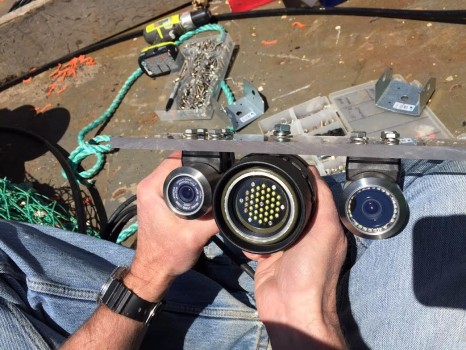 Gentle persuasion might best describe a new 50-minute documentary on fisheries research going on at the UMass Dartmouth School for Marine Science and Technology. Don Cuddy, program director for the Center for Sustainable Fisheries and a Mattapoisett resident, provides the narration, taking the viewer aboard the fishing vessel Liberty in May of 2015 to observe fish survey work. There, one sees footage from eight days at sea, culled from seven hours, of Dr. Kevin Stokesbury of SMAST. He is the researcher who developed the “drop camera” for counting scallops on the sea floor, exposing faulty science, and helped create the highly profitable scallop industry known today. Read the rest here 07:49
Gentle persuasion might best describe a new 50-minute documentary on fisheries research going on at the UMass Dartmouth School for Marine Science and Technology. Don Cuddy, program director for the Center for Sustainable Fisheries and a Mattapoisett resident, provides the narration, taking the viewer aboard the fishing vessel Liberty in May of 2015 to observe fish survey work. There, one sees footage from eight days at sea, culled from seven hours, of Dr. Kevin Stokesbury of SMAST. He is the researcher who developed the “drop camera” for counting scallops on the sea floor, exposing faulty science, and helped create the highly profitable scallop industry known today. Read the rest here 07:49
NOAA/NMFS begins fence-mending with Northeast fishermen – After they killed most of them off!
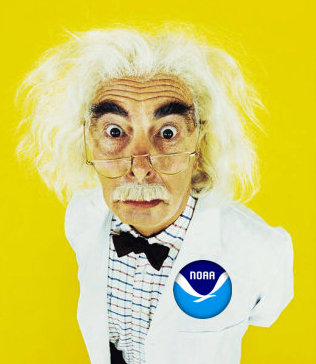 NOAA/NMFS this week undertook an effort to build trust and cooperation from the New England fishing industry by including the industry in upcoming groundfish stock assessments. Dr. Kevin Stokesbury (SMAST) is concerned about the inaccuracy of the various computer models being used to evaluate trends from year to year. As those who attend fisheries council meetings know all too well, the models regularly show discrepancies from one year to the next. These “retrospective patterns” are corrected by amending previous years’ estimates, which indicate an ongoing problem with the models, Stokesbury said. Read the rest here 07:55
NOAA/NMFS this week undertook an effort to build trust and cooperation from the New England fishing industry by including the industry in upcoming groundfish stock assessments. Dr. Kevin Stokesbury (SMAST) is concerned about the inaccuracy of the various computer models being used to evaluate trends from year to year. As those who attend fisheries council meetings know all too well, the models regularly show discrepancies from one year to the next. These “retrospective patterns” are corrected by amending previous years’ estimates, which indicate an ongoing problem with the models, Stokesbury said. Read the rest here 07:55
Video fish survey simple in concept, challenging in execution
 In a multi-media world, conducting fishery stock assessment surveys was stuck in the early 20th century until Dr. Kevin Stokesbury came along.The marine scientist at the UMass School for Marine Science and Technology concluded more than a decade ago that if he could do it using underwater cameras, he could be far more accurate than bottom trawls using questionable net gear in questionable ways. The result is the booming scallop industry, confidently and sustainably fishing thanks to the process of photographing and literally counting the scallops on the ocean floor. They were abundant almost beyond belief. Read the rest here 11:48
In a multi-media world, conducting fishery stock assessment surveys was stuck in the early 20th century until Dr. Kevin Stokesbury came along.The marine scientist at the UMass School for Marine Science and Technology concluded more than a decade ago that if he could do it using underwater cameras, he could be far more accurate than bottom trawls using questionable net gear in questionable ways. The result is the booming scallop industry, confidently and sustainably fishing thanks to the process of photographing and literally counting the scallops on the ocean floor. They were abundant almost beyond belief. Read the rest here 11:48
UMass researchers win scallop fisheries grants
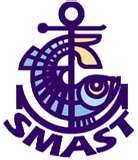 SMAST won $373,922 for Dr. Kevin Stokesbury’s continued development of video scallop surveys on Georges Bank. His methods have revolutionized the scallop biomass estimates in recent years, helping turn scallops into the species that keeps New Bedford at the top earning port in the United States for more than a decade. A grant of $160,738 went to Dr. Catherine O’Keefe for further development of a bycatch avoidance system that collects real-time information from fishermen about “hot spots” of yellowtail flounder, which can then be avoided by the scallopers. Read the rest here 08:34
SMAST won $373,922 for Dr. Kevin Stokesbury’s continued development of video scallop surveys on Georges Bank. His methods have revolutionized the scallop biomass estimates in recent years, helping turn scallops into the species that keeps New Bedford at the top earning port in the United States for more than a decade. A grant of $160,738 went to Dr. Catherine O’Keefe for further development of a bycatch avoidance system that collects real-time information from fishermen about “hot spots” of yellowtail flounder, which can then be avoided by the scallopers. Read the rest here 08:34
Money Well Spent! $450,0000 in State Funding of Cooperative Fisheries Research at UMass Dartmouth
 “UMass Dartmouth is fully committed to research that strengthens the scientific basis for fisheries management. Such research advanced the University’s mission to be an anchor of social and economic development for the region.” <Read more here> 08:03 Flow through fish survey video 2010 SMAST Video Survey
“UMass Dartmouth is fully committed to research that strengthens the scientific basis for fisheries management. Such research advanced the University’s mission to be an anchor of social and economic development for the region.” <Read more here> 08:03 Flow through fish survey video 2010 SMAST Video Survey
New Bedford: Scallop buyers get lessons in science, regulation
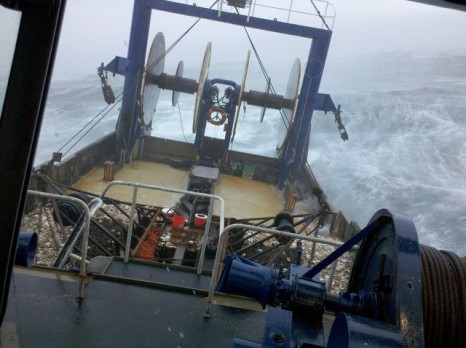 Scallop boats are allowed only about 32 days at sea per year, but scallops are so abundant and lucrative that working on a boat still can be extremely rewarding. Eastern Fisheries’ veteran captain Christopher Audette, who after 20 years on the water looks and sounds like someone from central casting, told the foreign visitors that deck hands on his boat took home more than $200,000 last year. Read more here southcoast 07:53
Scallop boats are allowed only about 32 days at sea per year, but scallops are so abundant and lucrative that working on a boat still can be extremely rewarding. Eastern Fisheries’ veteran captain Christopher Audette, who after 20 years on the water looks and sounds like someone from central casting, told the foreign visitors that deck hands on his boat took home more than $200,000 last year. Read more here southcoast 07:53
SMAST Findings from “choke species” yellowtail survey bode well for scallopers – Video
![]() Dr. Kevin Stokesbury of the UMass School for Marine Science and Technology said that the eight trawls counted so far from the trip indicate plentiful yellowtail on Georges Bank, which is something that scallopers have contended for years. Stokesbury said that NOAA fisheries estimates were that each of his trawls would yield five to 10 yellowtails. In fact, the SMAST team counted many times that amount, over 300 in one instance. more@southcoasttoday 10:13
Dr. Kevin Stokesbury of the UMass School for Marine Science and Technology said that the eight trawls counted so far from the trip indicate plentiful yellowtail on Georges Bank, which is something that scallopers have contended for years. Stokesbury said that NOAA fisheries estimates were that each of his trawls would yield five to 10 yellowtails. In fact, the SMAST team counted many times that amount, over 300 in one instance. more@southcoasttoday 10:13
Experimental Gear – Another try at video-counting the fish – Video
The black hull of owner Danny Eilertsen’s![]() F/V Justice emerged in the distance on Tuesday as a half dozen marine researchers from UMass Dartmouth waited on Union Wharf in Fairhaven. Eilertsen’s boat is playing host to the second round of testing of a radically different method of counting fish, a notoriously difficult thing to do, but the thing that everybody says they want and need. Among those climbing aboard was Dr. Kevin Stokesbury, more@sct
F/V Justice emerged in the distance on Tuesday as a half dozen marine researchers from UMass Dartmouth waited on Union Wharf in Fairhaven. Eilertsen’s boat is playing host to the second round of testing of a radically different method of counting fish, a notoriously difficult thing to do, but the thing that everybody says they want and need. Among those climbing aboard was Dr. Kevin Stokesbury, more@sct
SMAST Video Technology Shows Promise to Improve Groundfish and Flat Fish Stock Surveys
 savingseafood.org – Dr. Kevin Stokesbury, whose work in developing the SMAST Scallop Video Survey was essential to transforming scallop surveys in the 1990s, is collaborating again with the fishing industry, NOAA Fisheries, the Massachusetts Division of Marine Fisheries, SIMRAD, and his colleagues from the University of Massachusetts Dartmouth School for Marine Science and Technology (SMAST) to improve groundfish and flat fish stock surveys using video data collection. This new method shows promise to improve accuracy by increasing spatial coverage and to allow the conducting of surveys without fish mortality. continued
savingseafood.org – Dr. Kevin Stokesbury, whose work in developing the SMAST Scallop Video Survey was essential to transforming scallop surveys in the 1990s, is collaborating again with the fishing industry, NOAA Fisheries, the Massachusetts Division of Marine Fisheries, SIMRAD, and his colleagues from the University of Massachusetts Dartmouth School for Marine Science and Technology (SMAST) to improve groundfish and flat fish stock surveys using video data collection. This new method shows promise to improve accuracy by increasing spatial coverage and to allow the conducting of surveys without fish mortality. continued
Watch out, NOAA: SMAST is innovating again – GO SMAST, GO!!!

Dr. Kevin Stokesbury
Dr. Kevin Stokesbury posed a challenge: How do you count fish in the ocean without killing them, in particular yellowtail flounder? It’s an important question because fishermen simply do not trust NOAA’s survey methods. Many believe fish are severely undercounted because the NOAA researchers on the ship Bigelow don’t seem to know what they are doing when they go fishing. It’s killing the industry. excitedly continued.






